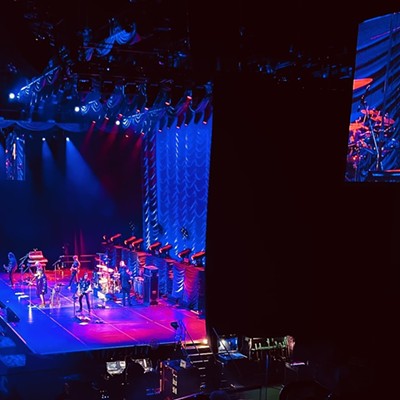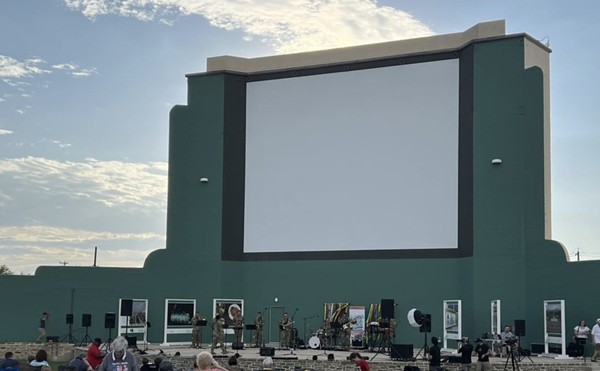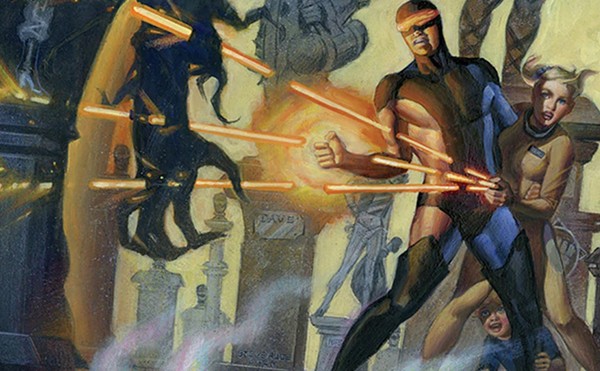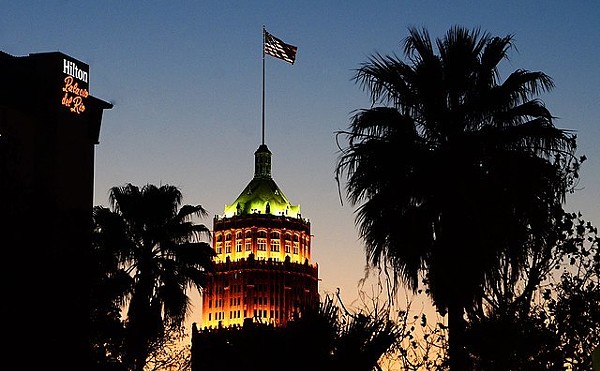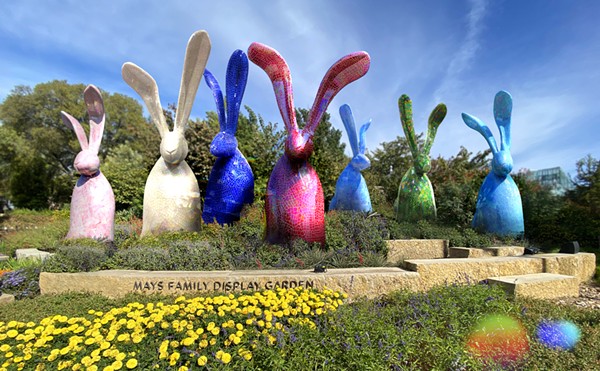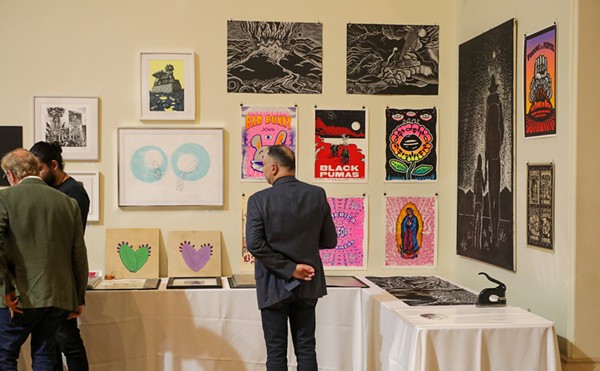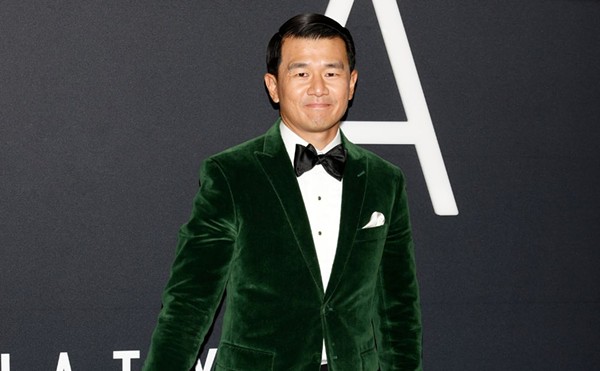As we sat talking on the porch in front of Sala Diaz about her show Atramentite, Megan Harrison brought up early an important but little-discussed fact of visual art: works don’t often begin with specific or fully-realized concepts. Instead, artists get interested in a form, or a particular material. Then they combine it with other forms, materials and processes—some foreign, some they know—trying out many different possibilities. Through that process they find something interesting to explore further.
For Harrison, Atramentite began with one drawing. Hung to the right of the gallery’s entrance, the show’s lone drawing is an epic 5-by-10 feet, with its sharply projecting block forms represented through velvety black shadows, pale grays and bright areas. But as Harrison’s shadows and highlights create a sense of three-dimensional space, the same black and grey inks bleed and splatter across the drawing, emphasizing the work’s flat surface while also conveying depth.
“I was curious about how [the drawing] might actually evolve into three dimensions,” Harrison wrote me later, “and experimented with different ways to move these blocks from two to three dimensions.” As she pushed that idea further by degrees, trying out its possibilities for the show, Harrison’s drawing technique moved to the surfaces of five-sided crystalline rods in discrete and vitrine-encased sculptures elsewhere in the front room. In the left room, Harrison expanded the form into the viewer’s space, creating an installation of much larger rods pushing out of the gallery floor. That all three sets of work—drawing, sculptures and installation—carry the title Atramentite perhaps indicates that process: they are permutations of the same substance.
Where does the show’s title come from?
‘Atramentium’ is Latin for “dark, inky substance” and the suffix “-ite” refers to mineral and geological forms. To me it made sense to talk about these three-dimensional ink drawings as if they were natural forms, self-organizing mineral structures.
Can you tell me a little bit about your past, growing up, art school—whatever you think is relevant?
I grew up in Colorado where the Rocky Mountains and the Great Plains meet. The experience of a place where the massive and expansive lie in dramatic contrast to one another has shaped my work. I explored the natural world often and had many open-ended days moving from one curiosity to the next. I didn’t start pursuing art formally until I was 25.
What aspects of the structure or formation of crystalline objects interest you?
It’s fascinating to me that the shape of a crystal is based on its smallest molecular bond. We can witness something invisible to us because the crystal’s structure amplifies the form of that initial and invisible bond, making the process visible to the human eye. The mineral specimens that I was looking at tend to be small but have a complexity of immense proportion. They were infinitely beautiful and mysterious no matter how long I looked at them or how much I studied their structure; this small thing that expanded like a universe.
What is the relationship between the large sculptures in the lefthand room and your other works?
The relationship is mainly one of evolution (large to small). Moving back to the righthand room, the technique became more refined and precious. The two rooms next to each other remind me of tourist caves. After taking a cave tour, you visit a half-museum, half-gift shop where there are smaller specimens extracted from the cave, taken out of their natural environment and put into cases on little velvet pillows. I like the idea of carving something out, isolating it in order to highlight it.
I’m interested in the relationship between your geometric forms and the surfaces you describe through the inks’ natural movement. Can you discuss your painting technique further?
Although the movement of the ink is its own, I enjoy thinking about creating the specific environment required to allow the ink to move into a variety of self-organizing patterns. Because I completely saturated the paper, it was unable to absorb the ink at first. The ink moved across the surface pushed by water, current or wind. The contrast between the fluid forms of the ink patterns and the seemingly frozen structure of the crystals is aesthetically interesting, but it also opens up an interesting dichotomy. At what point is something still? How is our reading of something solid influenced by the timescale we have available to us in order to observe it?
Atramentite
Free
6:30-9pm Thu, Oct 10
or by appointment
Sala Diaz
517 Stieren
(210) 852-4492
Through Oct 13



